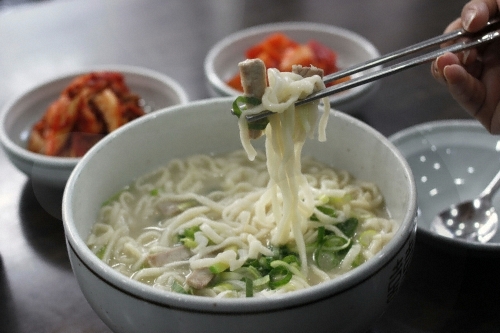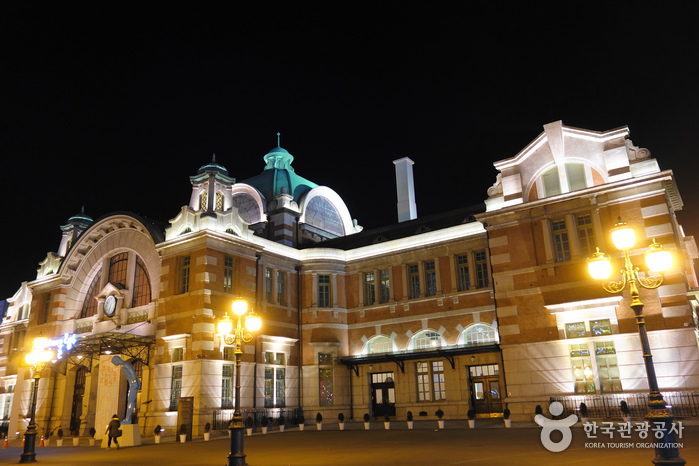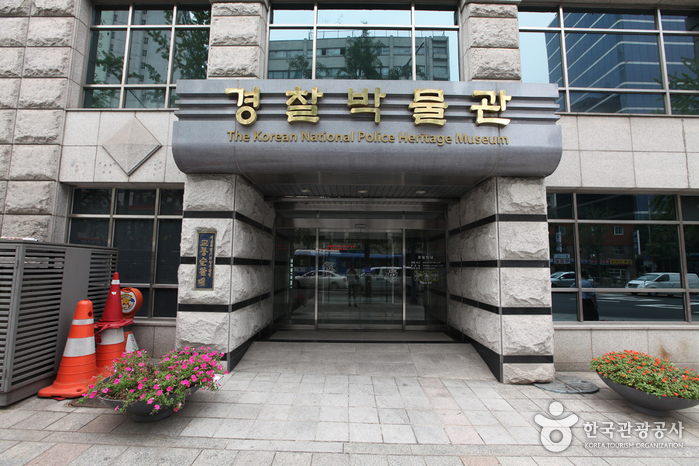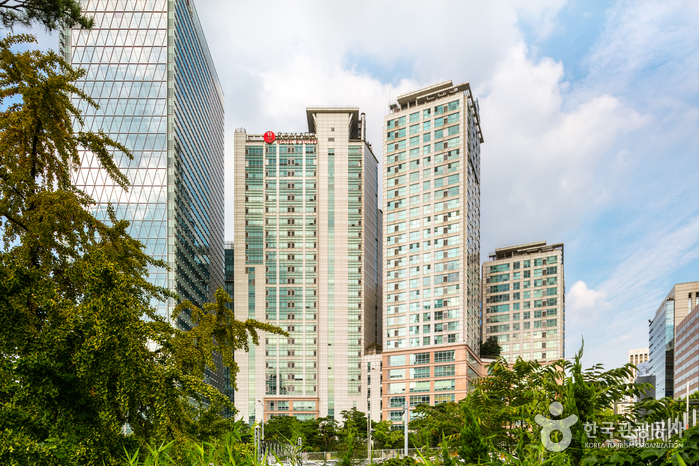Jeongdong Guksi (정동국시)
3.1Km 2024-06-19
5 Jeongdong-gil, Jung-gu, Seoul
02-732-0114
Jeongdong Guksi features a rich soup with a clean taste, created by carefully removing the oil dozens of times while boiling Korean beef bones for 15 hours. The restaurant uses this same beef bone broth in their mandutguk (dumpling soup), something not many restaurants do. The rich flavor of the broth combined with the soft dumplings, made in-house daily, is a must-try. The restaurant is also surrounded by many cultural and artistic spaces, making it a great addition to tours in the area.
Culture Station Seoul 284 (문화역 서울 284)
3.1Km 2024-12-04
1 Tongil-ro, Jung-gu, Seoul
Culture Station Seoul 284 opened in 2011 by restoring the old Seoul Station. The complex holds various programs including exhibitions, performances, cultural events and workshops. It holds over 100 years of history with Namdaemun Station being the original name of the station in 1900 and changing to Gyeongseong Station, Seoul Station, and now Culture Station Seoul 284. The look of 1925 Gyeongseong Station offers visitors a flashback to the past, providing a fun and special experience.
◎ Travel information to meet Hallyu’s charm
This is where Mok-ha (played by Park Eun-bin) waited for Ki-ho (played by Chae Jong-hyeop) with flowers in the TV series "Castaway Diva." As the restored historic Seoul Station, it also appeared in "Reply 1994" as the location where Samcheonpo (played by Kim Sung Kyun) first arrived in Seoul.
CheongKwanJang - Hongje Branch [Tax Refund Shop] (정관장 홍제)
3.1Km 2024-04-16
1F, 405, Tongil-ro, Seodaemun-gu, Seoul
-
Korean National Police Heritage Museum (경찰박물관)
3.1Km 2021-12-21
41, Saemunan-ro, Jongno-gu, Seoul
+82-2-3150-3681
The police museum opened on October 14, 2005 to give a better understanding of the job of the police and to offer a formal education to children who wish to become police officers in the future. The history hall of the museum is designed for visitors to learn about the history of Korean police at a glance, exhibiting information on the police force from the Joseon dynasty up until current times.
Visitors to the museum can pretend to be police officers by touching actual equipment and learning about an officer's daily tasks. Visitors can also get in patrol cars, wear a police uniform, experience shooting a gun through a simulation, and learn self-defense martial arts and arrest techniques. Visitors can also go to the museum jail.
LOTTE OUTLETS SEOUL STATION[Korea Quality]/롯데쇼핑 롯데아울렛 서울역점[한국관광 품질인증]
3.1Km 2024-09-03
405, Hangang-daero, Yongsan-gu, Seoul
+82-2-6965-2500
Lotte Outlet Seoul Station Branch sells famous department store brand products at discounts of 30-70%. Including a North Face Outlet store, there are about 130 brands, Missha, System, and Tendy among them - making this a fashion outlet that stays one step ahead of the trend. Located in Seoul Station, the city’s transport hub, the store has 11,200 sq metres of space over three storeys and provides free storage boxes for shoppers’ convenience.
Rail Cruise Haerang (레일크루즈 해랑열차)
3.1Km 2020-07-06
405, Hangang-daero, Yongsan-gu, Seoul
+82-1544-7755
Rail Cruise Haerang, a hotel-on-wheels, began operating in November 2008 as the nation's first tourist train with sleeping accommodations. With a name meaning "together with the sun," Haerang is designed to be a luxury train similar to a yacht traveling along a beautiful mountain river beneath the bright sun. The exterior of the train is painted in a deep blue with gold lines and a logo featuring a phoenix while the interior design has Korean elements. Tourists will enjoy their time on the train, with personalized services and full amenities.
Ramada Hotel & Suites by Wyndham Seoul Namdaemun (라마다 호텔앤스위트 서울남대문)
3.1Km 2024-12-23
27 , Chilpae-ro, Jung-gu, Seoul
+82-2-775-7000
Ramada Hotel and Suites Namdaemun in Jung-gu, in the heart of Seoul,is famousd of for foreigner tourists and vacationers. Transport is convenient, with Seoul Station and City Hall Subway Station close by. Major Seoul tourist attractions such as Namdaemun Market, Myeong-dong, Gwanghwamun, and Deoksugung Palace are easily reachable on foot. A range of room types are offered, and additional facilities include a business center, restaurants, cafes, and an underground shopping mall. Dogs are allowed in rooms, but an extra cleaning fee is payable.
The Handsome Obzee - Lotte Seoul Station Branch [Tax Refund Shop] (한섬 오브제 롯데서울역)
3.1Km 2024-04-23
405, Hangang-daero, Yongsan-gu, Seoul
-
Lotte Mart - Seoul Station Branch [Tax Refund Shop] (롯데마트 서울역점)
3.1Km 2024-04-22
426, Cheongpa-ro, Jung-gu, Seoul
-
Daehyun Dewl - Lotte Seoul Station Branch [Tax Refund Shop] (대현 듀엘 롯데서울역)
3.1Km 2024-04-17
405, Hangang-daero, Yongsan-gu, Seoul
-


![CheongKwanJang - Hongje Branch [Tax Refund Shop] (정관장 홍제)](http://tong.visitkorea.or.kr/cms/resource/34/2889534_image2_1.jpg)

![LOTTE OUTLETS SEOUL STATION[Korea Quality]/롯데쇼핑 롯데아울렛 서울역점[한국관광 품질인증]](http://tong.visitkorea.or.kr/cms/resource/32/2652032_image2_1.jpg)

![The Handsome Obzee - Lotte Seoul Station Branch [Tax Refund Shop] (한섬 오브제 롯데서울역)](http://tong.visitkorea.or.kr/cms/resource/19/2878419_image2_1.jpg)
![Lotte Mart - Seoul Station Branch [Tax Refund Shop] (롯데마트 서울역점)](http://tong.visitkorea.or.kr/cms/resource/40/2887940_image2_1.jpg)
![Daehyun Dewl - Lotte Seoul Station Branch [Tax Refund Shop] (대현 듀엘 롯데서울역)](http://tong.visitkorea.or.kr/cms/resource/96/2878396_image2_1.jpg)
 English
English
 한국어
한국어 日本語
日本語 中文(简体)
中文(简体) Deutsch
Deutsch Français
Français Español
Español Русский
Русский